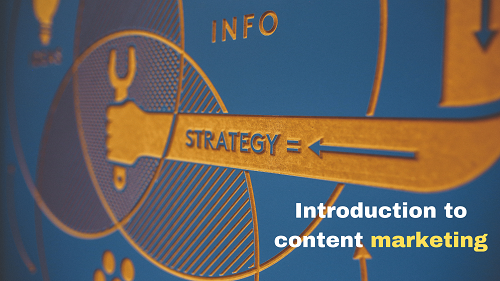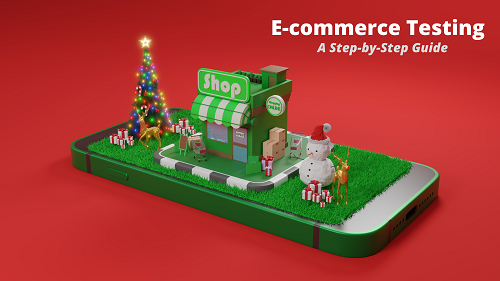Introduction to content marketing
Content marketing is a strategic marketing approach focused on creating and distributing valuable, relevant, and consistent content to attract and retain a clearly defined audience — and, ultimately, to drive profitable customer action.
It’s an ongoing process that helps you create valuable content your audience will find useful and wants to consume. By doing this, you can build trust and credibility with your audience, which leads to more customers taking the desired action, such as making a purchase or signing up for a service.
Content marketing is not about selling; it’s about building relationships. And it takes time to do it right. But if you commit to the process and produce quality content on a regular basis, you can reap the rewards of increased traffic, leads, conversions, and brand loyalty.
The benefits of using content marketing
Content marketing is a strategic marketing approach focused on creating and distributing valuable, relevant, and consistent content to attract and retain a clearly defined audience — and, ultimately, to drive profitable customer action.
When it’s done right, content marketing can be an extremely effective way to drive leads, sales, and awareness for your business. And because it’s an evergreen strategy (meaning its benefits never expire), it’s well worth the investment.
Some of the key benefits of using content marketing include:
1. Increasing leads and sales: A well-executed content marketing strategy can help you attract more leads and close more sales. By creating targeted content that speaks directly to your ideal customer, you can increase the likelihood that they’ll take the desired action – whether that’s subscribing to your email list, scheduling a consultation, or making a purchase.
2. Growing web traffic: Quality content is one of the best ways to drive organic traffic to your website. By regularly publishing helpful blog posts, infographics, eBooks, and other types of content, you can attract new visitors to your site and encourage them to explore your other pages. This can lead to more website visitors – and eventually, more customers.
3. Boosting SEO efforts: In addition to growing web traffic, quality content can also help you improve your search engine ranking – which can further increase web traffic (and conversions). By including relevant
Developing a content marketing strategy
In order to develop an effective content marketing strategy, you first need to understand what your goals are and who your target audience is. Once you have a clear understanding of these two things, you can start developing a plan for how to create and distribute content that will help you achieve your desired results.
There are a few key elements that should be included in any good content marketing strategy:
1. A focus on quality over quantity – It’s better to have a small number of high-quality pieces of content than a large number of low-quality ones. Your audience will appreciate the effort you put into creating valuable, informative content, and this will help build trust and credibility with them.
2. A mix of different types of content – Don’t just stick to one type of content (e.g., blog posts). Mix things up with infographics, videos, ebooks, etc. Not only will this keep your audience engaged, but it will also give you a chance to reach different people with different preferences.
3. A distribution plan – In order for your content to be seen by as many people as possible, you need to have a solid distribution plan in place. This means knowing which channels (e.g., social media, email marketing) you’ll use to promote your content and when/how often you’ll do it.
4. Regular promotion and measurement – Just because you’ve published something doesn’t mean people will automatically see it.
Types of content and formats
As digital marketing continues to evolve, the role of content marketing becomes more important. Content is a key part of any digital marketing strategy, and there are a variety of types of content and formats that can be used to achieve different objectives.
The most common type of content is blog posts, which can be used to provide valuable information and insights, build thought leadership, or generate leads. Other types of content include e-books, white papers, infographics, case studies, webinars, and video.
When planning your content strategy, it’s important to consider what type of content will best fit your needs and how you can use it to achieve your goals. For example, if you want to build thought leadership, you’ll want to create high-quality, in-depth content that will position you as an expert in your field. If you’re looking to generate leads, on the other hand, you’ll want to create content that is helpful and informative so that people will want to sign up for your mailing list or download your e-book.
No matter what type of content you create, it’s important to make sure it’s well-written and engaging so that people will actually read it and find it valuable. Once you have great content, promoting it through social media or email marketing can help amplify its reach and ensure that more people see it.
The role of storytelling in content marketing
Storytelling is an important part of content marketing. It can help you connect with your audience and communicate your message in a way that is interesting and engaging. When done well, storytelling can be an effective tool for building relationships, raising awareness, and even driving sales.
There are many different ways to use storytelling in content marketing. You can use it to:
– Share your brand story
– Introduce new products or services
– Offer behind-the-scenes looks at your business
– Share customer success stories
– Highlight company news or milestones
No matter what type of story you want to tell, the key is to make it relevant to your audience and ensure that it fits with your overall branding and marketing goals.
Measuring the success of content marketing efforts
There are a number of ways to measure the success of content marketing efforts. One way is to look at the engagement metrics for each piece of content. This includes things like the number of views, comments, social shares, and other interactions. Another way to measure success is through leads and sales generated from the content. This can be tracked by looking at the number of people who fill out a contact form or make a purchase after viewing a piece of content. Finally, another way to measure success is by looking at brand awareness and sentiment metrics. This includes things like web traffic, brand mentions, and positive customer reviews. By tracking all of these metrics, you can get a clear picture of how successful your content marketing efforts are.
Conclusion
In conclusion, content marketing is a powerful tool that can be used to effectively drive engagement and sales in digital marketing. It allows businesses to create valuable and engaging content that resonates with their target audience, which ultimately leads to better relationships and more customer loyalty. Content marketing also provides an opportunity for businesses to express their unique brand story through captivating visuals and compelling messages. With the right approach, content marketing can help companies build trust, establish credibility, increase conversions and generate long-term success.
Also Read:






